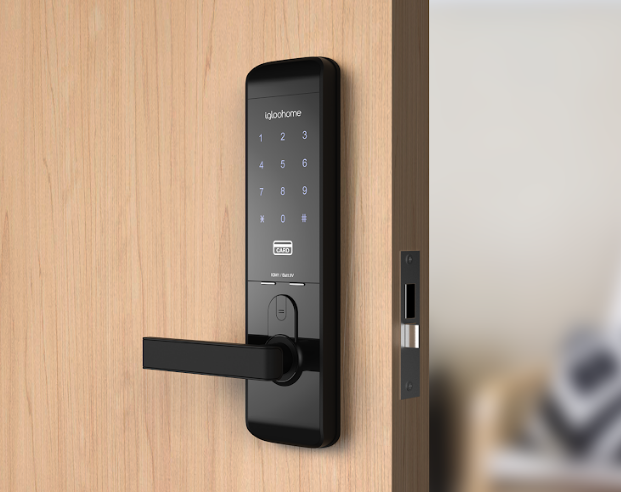
Smart Lock Malaysia, the smarter way to manage your home
0124049931
Email: ryan@smartlockmalaysia.com
Smart Lock Malaysia
2-3, Jalan Merbah 1, Bandar Puchong Jaya, 47170 Puchong, Selangor
How the Igloohome Smart Lock Works Offline
How the Igloohome Smart Lock Works Offline
Here at Igloohome, we often get curious customers asking us how our smart lock works. Being able to grant access to guests from an app at any time? Sure, but wouldn't the lock need to be connected online? Our answer is no - although it appears to defy logic, our Igloohome smart lock does not need an internet connection to function.
Here's a simple explanation of how it works.
The magic comes from the synchronisation of our smart lock and our mobile app, even before the lock is installed.
You probably are familiar with this concept of synchronisation. A similar system is used in online banking, which requires you to key in a one-time password that is generated from a security token. Similar to our lock, the security token is not connected to the internet. Yet it can generate codes that allow you to log into the system, and these codes change each time.
Photo credit: Edgis Security
Essentially, there is a 'formula' that has been programmed in both the Igloohome smart lock and our app (likewise, in the bank system and security token), so that they can understand each other without being connected. Your PIN code holds the message - for eg. grant access to this guest for 2 days - that the app needs to pass to the lock.
So this is what happens:
- You click 'Add lock code' in our Igloohome app, and key in the validity period of the access you want to grant (ie. the message).
- Our app uses the 'formula' to translate the message into a PIN code.
- You (or your guests) key the PIN code into our Igloohome smart lock.
- Our lock uses the same 'formula' in reverse to translate the PIN code into the message.
- The lock then acts upon the message, and grants access to you (or the guests) for the number of days you keyed in.
Voila! It's 'Open Sesame' in modern times.
No internet connection is needed, because you (or your guests) were actually the one that communicated the necessary information from the app to the lock, via the PIN code.
Of course, in case you were wondering, we ensure that the 'formula' for each Igloohome smart lock is different. That way, you definitely cannot unlock someone else's lock with your app.
So that's how our Igloohome smart lock works offline, and keyless access is made possible without internet. The technology behind the system is actually much more complicated than that - algorithms and seeds and many other technical terms are involved, but you probably wouldn't want to go into the details.
Leave it to us and we'll help you manage your home with ease.
The Differences between WIFI-enabled or Non-Wifi-enabled Smart Lock?
There are some key points to take note of when you’re deciding between these two categories:
a) Security
Non-WiFi-enabled (NWE) locks are considered to have increased security standards as compared to WiFi-enabled locks.
Without the need for Internet, NWE locks are less susceptible to WiFi hacking. WiFi-enabled smart locks are vulnerable to a host of tech issues, and it’s easy for a tech-savvy burglar to hack into your WiFi network (which your smart lock is connected to). Your attacker can disable your door without needing to be onsite.
b) Reliability
Non-WiFi-enabled locks are often also more reliable than WiFi-enabled ones.
You should always be able to gain access to your home, why leave that in the hands of an Internet connection? Should WiFi connectivity fail you, you may not be able to access or control your smart lock – leaving you locked out of your home.
Those using non-WiFi-enabled locks aren’t affected by Internet or WiFi related flubs. It’s a great choice for those living in remote areas with an unreliable Internet connection because your lock still functions normally!
c) Cost
Many WiFi-enabled locks require an external hub. These hubs are usually an additional USD$100 to the cost of the lock. Hence, a non-WiFi-enabled lock is affordable due to no extra costs.
d) Functions
WiFi-enabled locks can have more remote functions than non-WiFi-enabled ones. Firstly, You’re able to monitor the ins-and-outs of your home whenever and wherever you are. You can also let guests into your home by unlocking your door remotely from your smartphone.
Non-WiFi-enabled locks require extra steps to perform similar functions. A great example is the igloohome smart lock – despite working offline, you can grant access to guests via PIN codes and Bluetooth keys remotely. Additionally, you can view access logs when you’re within Bluetooth range. If Bluetooth keys are used to unlock your door, you’ll be notified in real-time.



